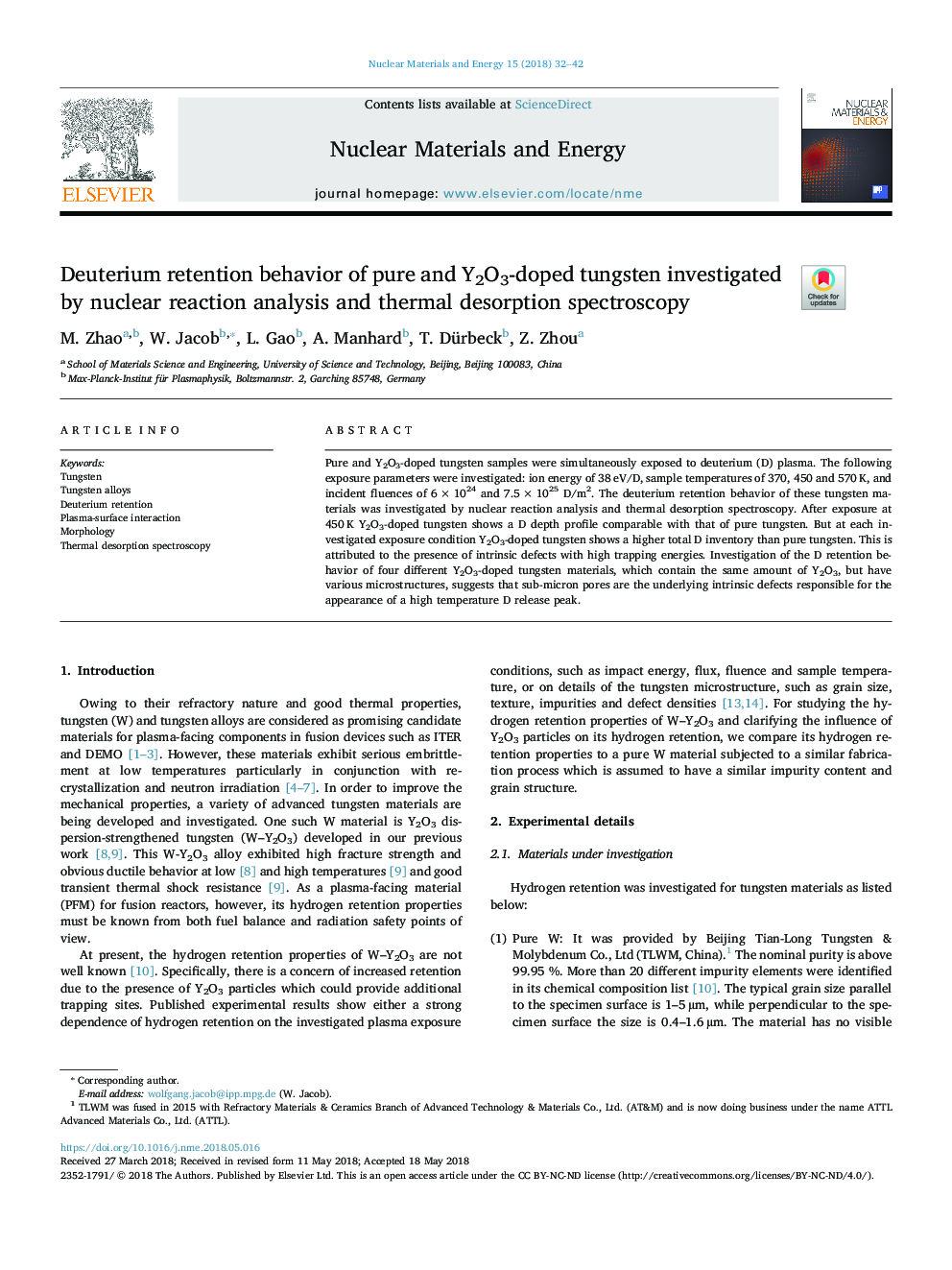| Article ID | Journal | Published Year | Pages | File Type |
|---|---|---|---|---|
| 7987284 | Nuclear Materials and Energy | 2018 | 11 Pages |
Abstract
Pure and Y2O3-doped tungsten samples were simultaneously exposed to deuterium (D) plasma. The following exposure parameters were investigated: ion energy of 38â¯eV/D, sample temperatures of 370, 450 and 570â¯K, and incident fluences of 6â¯Ãâ¯1024 and 7.5â¯Ãâ¯1025 D/m2. The deuterium retention behavior of these tungsten materials was investigated by nuclear reaction analysis and thermal desorption spectroscopy. After exposure at 450â¯K Y2O3-doped tungsten shows a D depth profile comparable with that of pure tungsten. But at each investigated exposure condition Y2O3-doped tungsten shows a higher total D inventory than pure tungsten. This is attributed to the presence of intrinsic defects with high trapping energies. Investigation of the D retention behavior of four different Y2O3-doped tungsten materials, which contain the same amount of Y2O3, but have various microstructures, suggests that sub-micron pores are the underlying intrinsic defects responsible for the appearance of a high temperature D release peak.
Keywords
Related Topics
Physical Sciences and Engineering
Energy
Nuclear Energy and Engineering
Authors
M. Zhao, W. Jacob, L. Gao, A. Manhard, T. Dürbeck, Z. Zhou,
